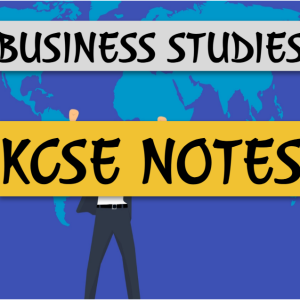Description
Structure of the Document
- Header Information:
- Space for the candidate’s name, index number, signature, and date.
- An indication of the time allocated for the exam, which is 2½ hours.
- Instructions:
- Candidates are instructed to answer any five out of the six questions presented in the paper.
- All questions carry equal marks, and the total score for the paper is 100 marks.
Content of the Examination
The paper consists of six questions, each divided into two parts (a and b), covering a wide range of topics related to business studies. The questions are designed to test both theoretical knowledge and practical application in various business scenarios:
- Market Structures:
- Characteristics of a monopolistic market structure and advice for an investor in marine transport regarding investment policies.
- Means of Payment and Economic Benefits:
- Means of payment used in home trade and the benefits to the Kenyan economy as a member of the East African Community.
- Production and Employment:
- Benefits of engaging in indirect production and measures to curb unemployment in Kenya.
- Recording Transactions:
- The procedure for recording business transactions in ledger accounts and factors that may lead to demand-pull inflation.
- Privatization of State Corporations:
- Reasons for converting state-owned corporations into public limited companies and analysis of factors influencing changes in the quantities supplied in a market.
- Elements of Transport and Transaction Recording:
- Elements of transport and recording of various transactions in the relevant books of original entry.
Marking Scheme
The document includes a detailed marking scheme that outlines acceptable answers and explanations for each question. This provides clarity on what examiners will look for in candidates’ responses. Some of the key points covered in the marking scheme include:
- Characteristics and dynamics of different market structures.
- Various means of payment in trade and their applications.
- Economic advantages of regional cooperation and production methods.
- Procedures for accurately recording financial transactions and understanding inflationary pressures.
- The rationale behind privatization and factors affecting supply in the market.




Reviews
There are no reviews yet.